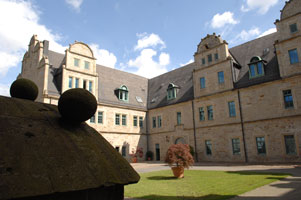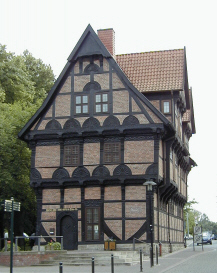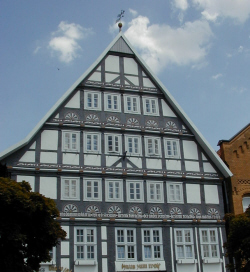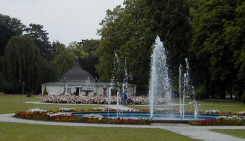Stadthagen

Today the castle of Stadthagen is home of the inland revenue office. The mighty building constructed in the 12th century was originally designed as a water castle.
The current part was built during the Weser Renaissance (1534-1544) by Jörg Unkair. It is as such the oldest and most remarkable memorial of the Renaissance in Lower Saxony and one of the most significant buildings of the 16th century in Germany.

In front of the castle stands the old administration and court building. This part was constructed in 1553 with grandeur and it serves as a museum today.
Stadthagen is very lively as otherwise one would only come close to this city in admiration and astonishment: Barely anywhere else have the Medieval times, Renaissance and Barock left such architectural wealth. Beside the impressive building of the Martini church, constructed in the 13th century, you find the unique Mausoleum of the great Prince Ernst and his castle built in the style of the early Weser Renaissance. These constructions accentuate the type of timber framed houses. Yet, as mentioned: Stadthagen is a lively, lovably active city. Stadthagen can celebrate and the annual Schützenfest bears testament.

The marketplace of Stadthagen is the centre of the old part of the city. Here a lot of old timer framed houses are located. The old part of the city is still today completely surrounded by the old fortification moats.
The church St. Martini is also situated in the old part of the city.
Here you find the great tomb of the Count Otto IV of Schaumburg.

Next to the church you find the heptagonal Mausoleum of the Prince Ernst zu Schaumburg. The tomb of the Prince is in this artwork designed and constructed by Giovanni Maria Nosseni.

